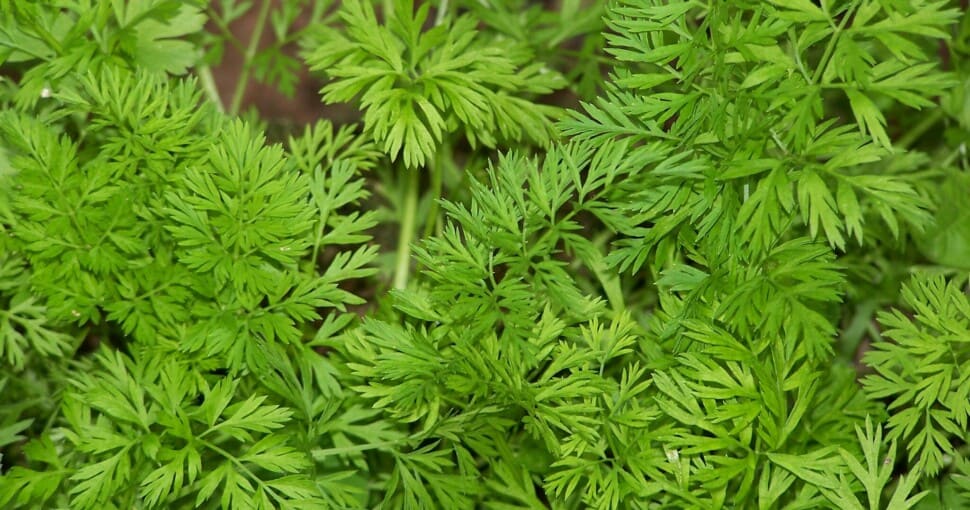Carrots have long been a staple in many culinary dishes and can be easily cultivated in nearly every climate. Carrots are root vegetables in various colors, including orange, black, red, white, and yellow. Their iconic green leaves grow in a rosette and take about 90 days to mature fully. Carrots have a large primary umbel that contains up to 50 smaller umbellets. These umbellets can have as many as 50 small white flowers sprouting from each umbellet.
Contents
Everyone knows what carrots look like when they are harvested. Identifying carrots by their leaves alone could be challenging to even the most experienced botanist. Most of these plants have leaves that look like carrot leaves. These plants include:
- Yarrow – long stems similar to carrot stems.
- Cow Parsnip – large clusters of white flowers similar to carrot flowers.
- Southern Brass Buttons – small fingerlike lobes similar to carrot umbellets.
- Smallage – long stems and small white flowers similar to carrots.
- Sweet Cicely – small clusters of white umbels similar to carrots.
- Nineleaf Biscuitroot – resembles carrot umbels when first sprouting.
- Lesser Swinecress – the narrow lance shapes of its leaves are similar to carrot leaves.
- Pineappleweed – bright green narrow pointed leaves are similar to carrot leaves.
Knowing the difference between carrots and weeds can be very useful. Some of these weeds are edible, and some are poisonous. Knowing the difference can enhance a meal or prove fatal to unsuspecting passersby and animals. Let’s look at these 8 plants resembling carrots more closely.
1. Yarrow (Achillea Millefolium)
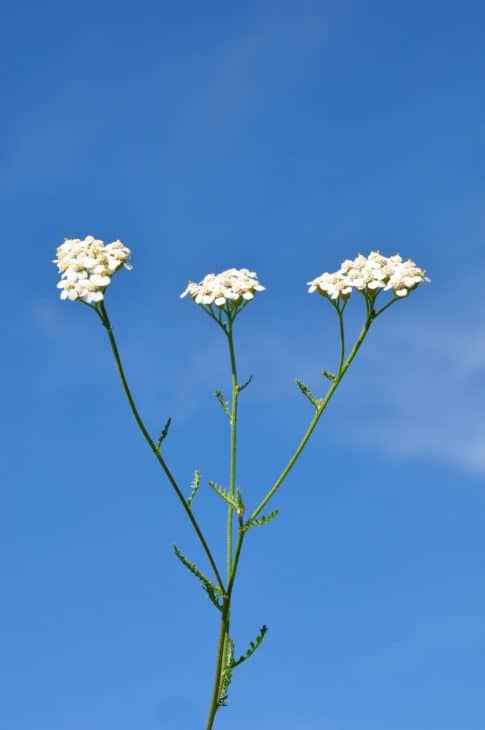
Common Yarrow (Achillea millefolium) has broad leaves and an extensive root system, much like carrots. Yarrow can grow nearly anywhere except for the harsh desert. Yarrow prefers frequently irrigated climates and can most commonly be found at 11,500 feet above sea level.
When Yarrow flowers, they look nearly identical to the small white flowers found on carrots. These small clusters of flower buds sprout from long stems that look almost fernlike and have small leaf hairs that are mostly flat against the leaf’s surface.
While Yarrow is most commonly grown for ornamental purposes, some aspiring botanists have dried their leaves and used parts of the Yarrow to make tea. Yarrow is pleasant on the eyes and the stomach and easy to grow when placed in the hands of even the most inexperienced gardener.
Related: 5 Plants That Look Like Yarrow
2. Cow Parsnip (Genus Heracleum)
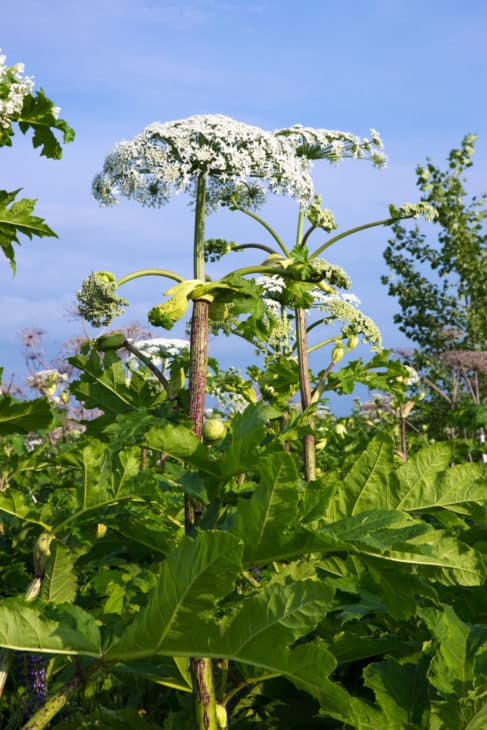
Cow Parsnip (genus Heracleum) is part of a family of 60 different species of flowering plants within the parsley family. Cow Parsnip is most commonly found in the North Temperate Zone and high on top of tropical mountains.
Cow Parsnip can grow up to 7 feet tall and most closely resemble carrots when their clusters of white, and sometimes purple, flowers sprout. These clusters of brilliant white petals can bloom in a diameter of nearly 8 inches.
The danger of Cow Parsnip is that nearly all members of the Heracleum genus are poisonous to some extent. When people come into contact with these plants, their skin becomes irritated, and some people even develop blisters, so extreme caution is advised when investigating Cow Parsnip.
3. Southern Brass Buttons (Cotula Australis)
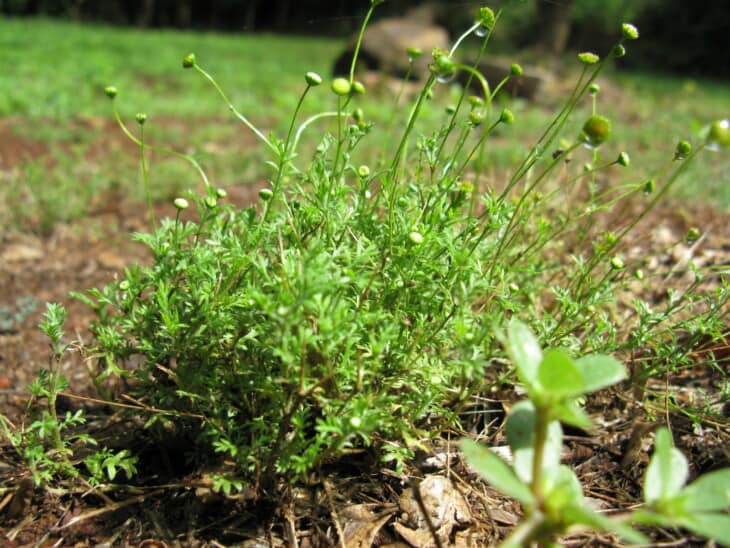
The Southern Brass Button plant (Cotula Australis) is native to Australia’s untamed and mysterious lands. This low-growing broadleaf plant has a long stem and bright button-like flower heads that resemble the flowers found on young carrot stems.
Southern Brass Buttons have long, narrow leaves during their seedling phase that later dissects and gets finely sparsed when fully maturing. Their flowers bloom annually between January and May, ranging from pale yellow to white.
No useful product can be made or harvested from Southern Brass Buttons. These plants are considered invasive weeds that should be pulled out of any garden they are found in as they might cause damage to more vulnerable plants.
4. Smallage (Apium Graveolens)
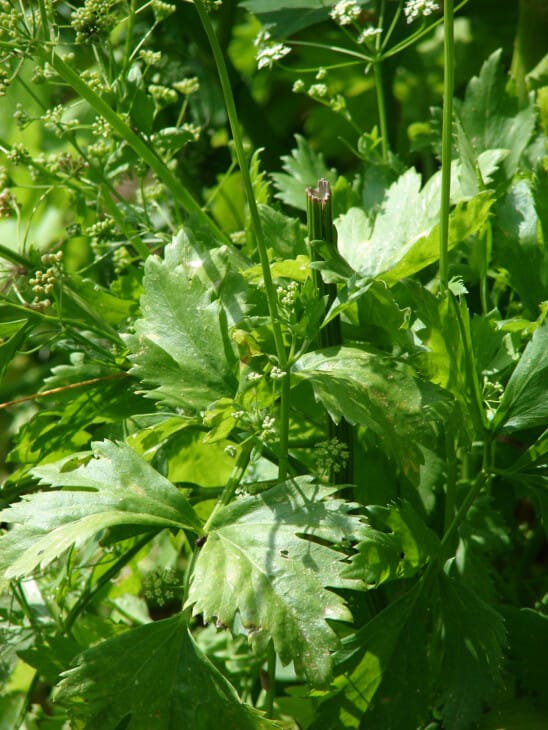
Smallage (Apium Graveolens) are small biennial herbs that form part of the carrot family, often called wild celery. Their long green stalks and fine leaves resemble those of their carrot brothers and sisters.
Their small white flowers that grow in similar clusters could fool even the most avid carrot enthusiast as they look nearly indistinguishable from those of the classic orange carrot. Most people will pluck these plants thinking they are getting carrots, only to be disappointed when they find only a large root system.
Herbalists have always liked Smallage as their roots could be used in traditional medicines, and their long leafy stalks can be brewed into a soothing tea.
5. Sweet Cicely (Myrrhis Odorata)
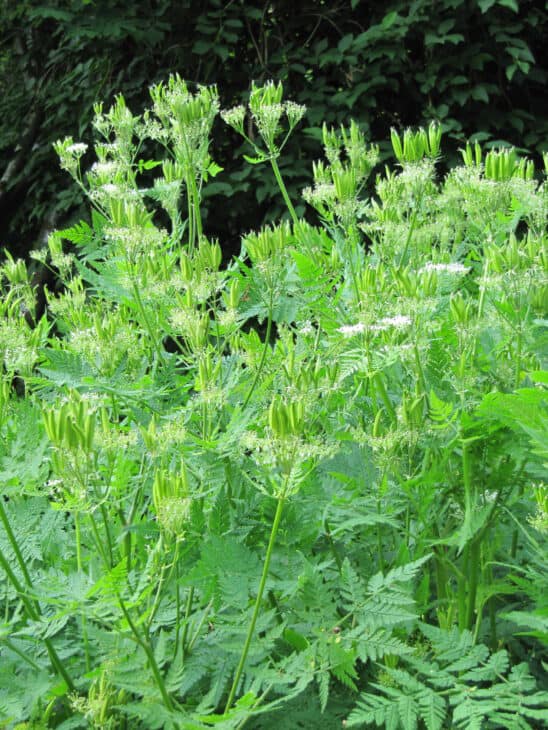
Sweet Cicely (Myrrhis Odorata) is a popular carrot look-a-like found throughout Europe. This fragrant herb is a welcome addition to any garden as it attracts bees and has various applications. Sweet Cicely naturally grows in the wild but can easily be transplanted into any home garden.
Their short stock, wide-spread leaves, and tiny white flowers look almost identical to those found on carrots. Sweet Cicely blooms between May and August every year and invites various insects to enjoy its pretty petals.
If you want to plant some Sweet Cicely in your garden, ensure you occasionally fertilize and water the soil during dry periods. Irrigate your Sweet Cicely more frequently if your garden’s sandy soil cannot retain water well.
6. Nineleaf Biscuitroot (Lomatium Triternatum)
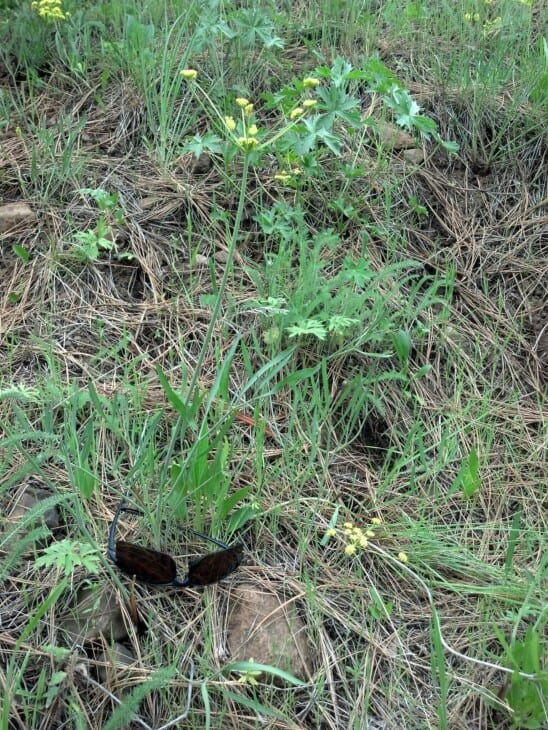
Nineleaf Biscuitroot (Lomatium Triternatum) is another member of the carrot family and grows all over the western United States and Canada. The Nineleaf Biscuitroot has bright yellow flowers and blooms between April and July.
This hardy perennial grows 3 feet tall. They most closely resemble carrots when their leafless stalks sprout and small flowers grow in tight clusters. All their stalks emerge from their lower part and can be subdivided into three segments, named “Nineleaf Biscuitroot.”
Next time you visit Utah’s Wasatch Mountains’ subalpine landscape, look for large patches of green and yellow Nineleaf Biscuitroot plants. You won’t be disappointed.
7. Lesser Swinecress (Lepidium Didymum)
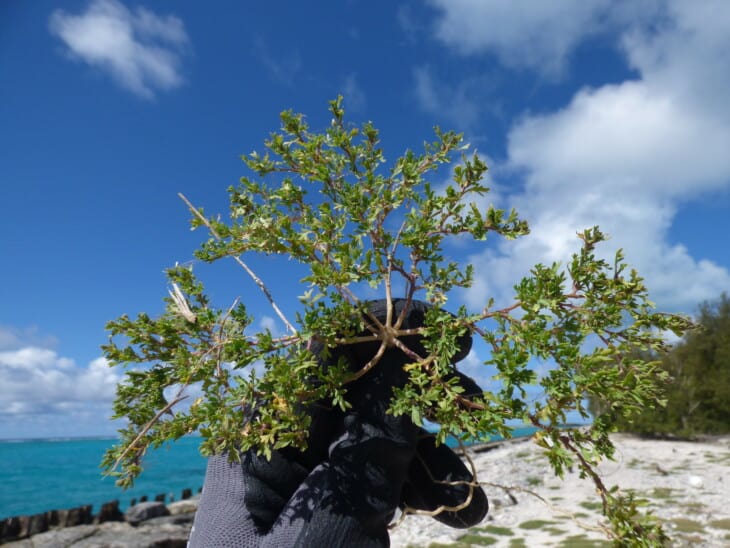
Lesser Swinecress (Lepidium Didymum) is a low-growing biennial broadleaf plant that grows around 6,600 feet above sea level. They grow to half an inch and have long hairless, narrowly laced leaves with rounded tips.
When Lesser Swinecress matures, its stems can spread almost 20 inches over the ground, with the tips of their leaves rising into the air. Their flowers bloom between February and October and have tiny white stalky flowers that grow in a cluster along the stem.
Lesser Swinecress is not a pleasant plant to have around as its leaves give off a sour skunklike odor, and it has been reported that milk produced from cows who feed on Lesser Swinecress has an unpleasant flavor. When you find Lesser Swinecress, it’s best to eradicate it as soon as possible before it has a chance to take root in your garden and upset your delicate ecosystem.
8. Pineappleweed (Chamomilla Suaveolens)
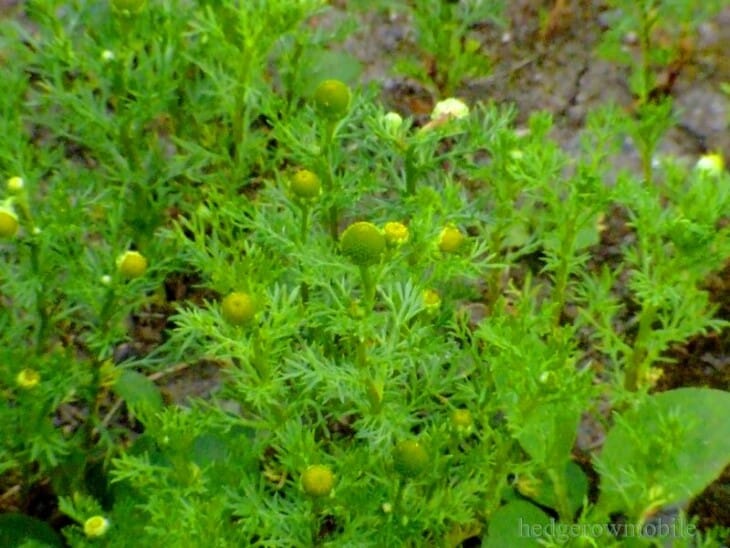
Pineappleweed (Chamomilla Sauveolens) gets its name from the scent their crushed flower heads give off, namely pineapple. This plant is extremely common during the summer months throughout California.
Mature Pineappleweeds grow to just over 4 feet tall and have long slender stems with a flower bud at the top. These flowers bloom between May and August, are egg-shaped, and are densely packed with tiny yellowish-green flowers.
Pineappleweeds are a welcome addition to any garden and will add exactly the right amount of color to compliment the rest of your flowers without being overtly eye-catching. Next time you are looking for a carrot look-a-like, consider sprinkling in a couple of Pineappleweed seeds. Your family will enjoy the extra bit of pop they bring to your home.

